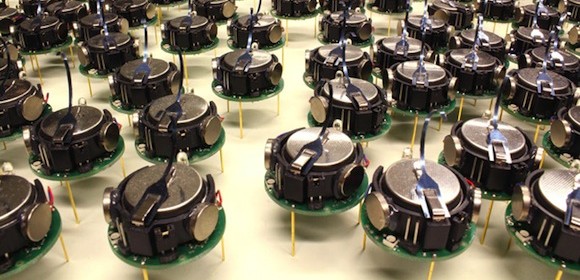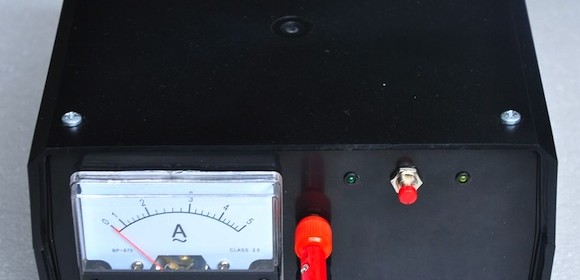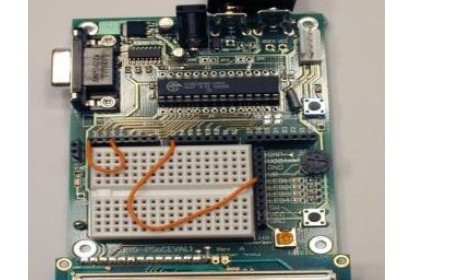Self-organizing Kilobots

The Self-organizing Systems Research Group at Harvard has created a “thousand robot swarm“, named Kilobots, which can self-arrange themselves into shapes and patterns. Each robot in the group moves uses two vibrating motors to move and an infrared TX/RX pair to communicate with its neighbors and to measure their proximity. The Kilobot robot software and hardware design are available open-source for non-commercial use. Watch this video to see the robots in action.
Read more


